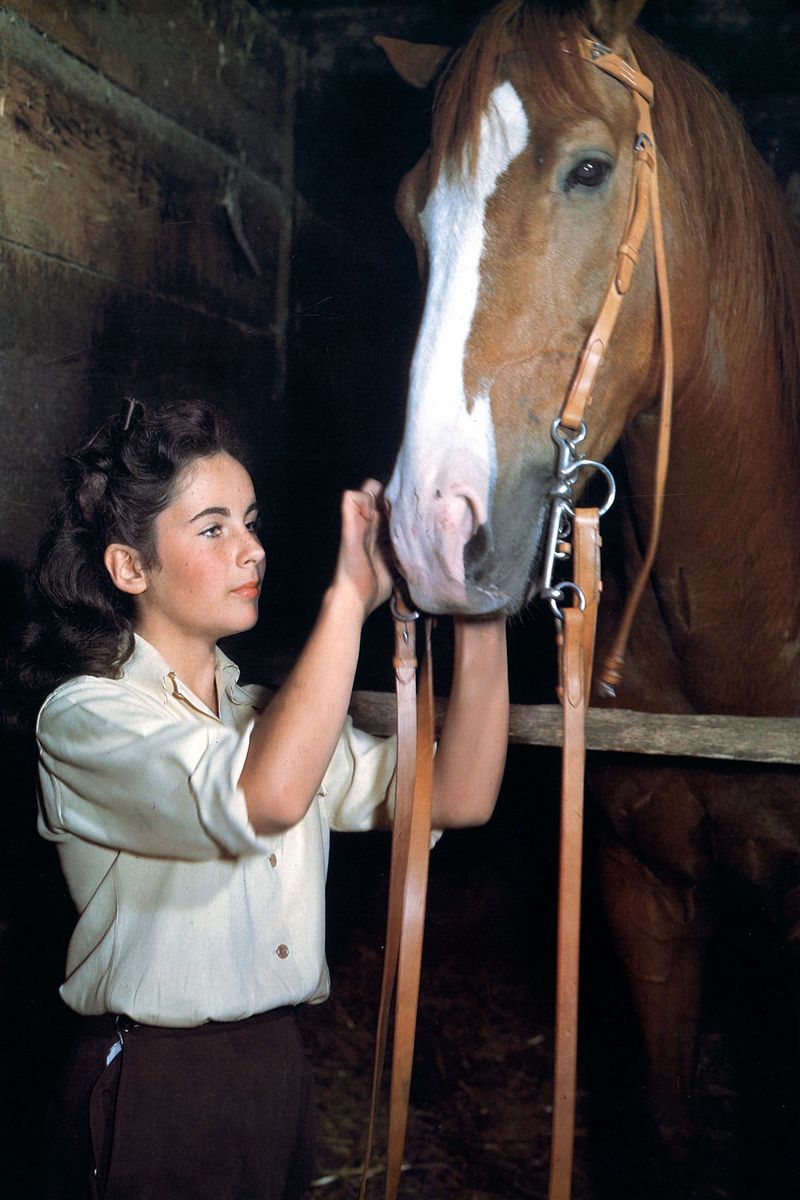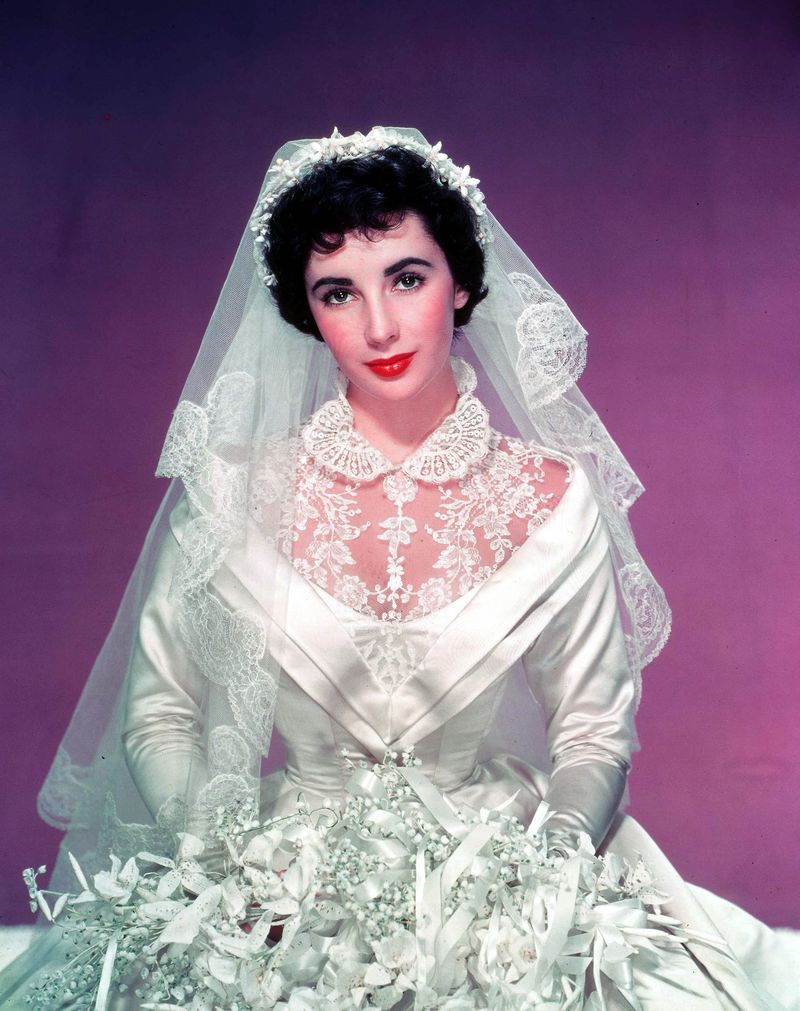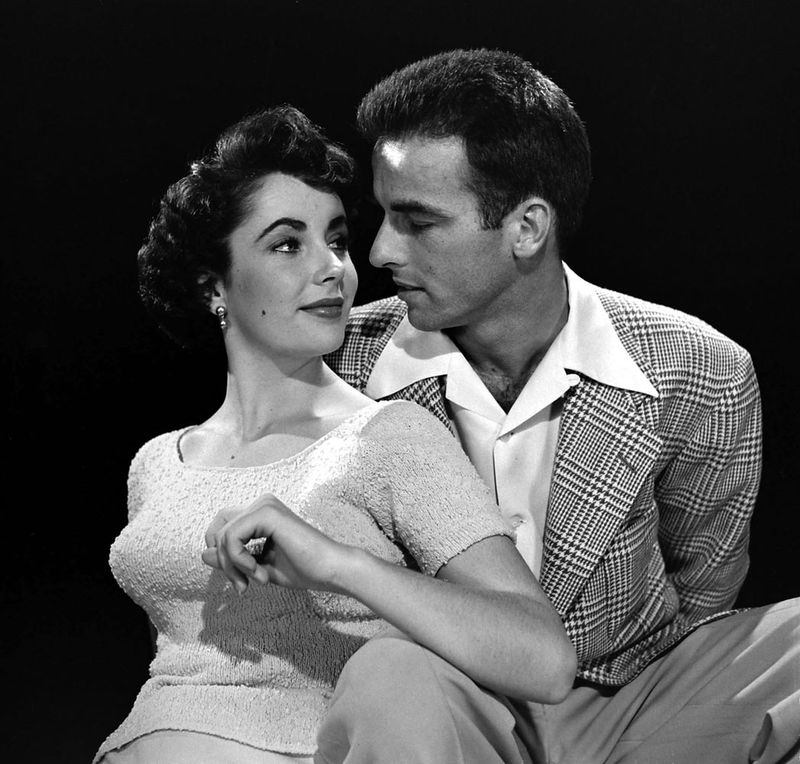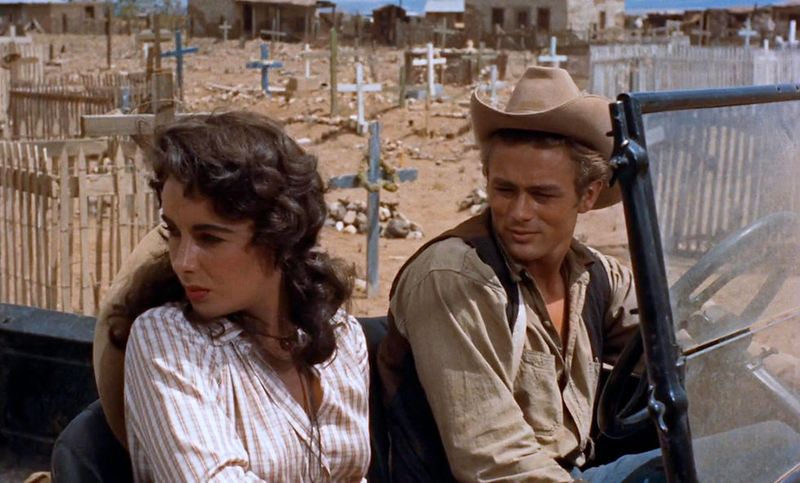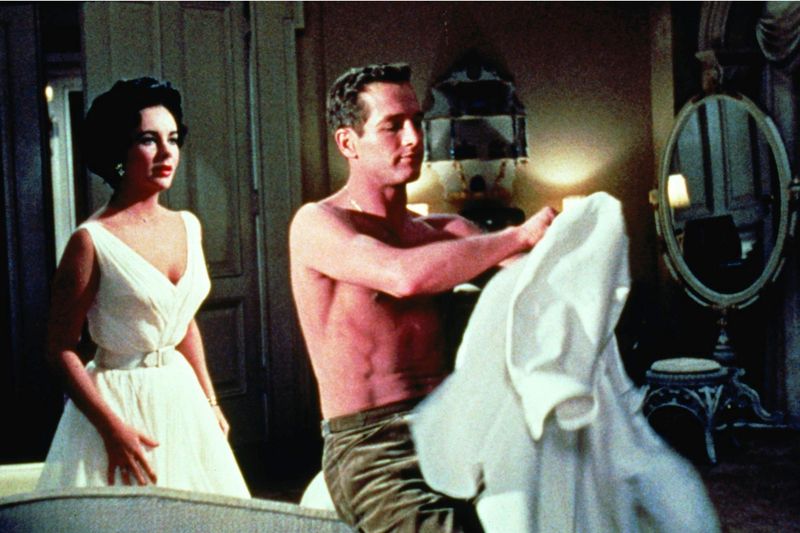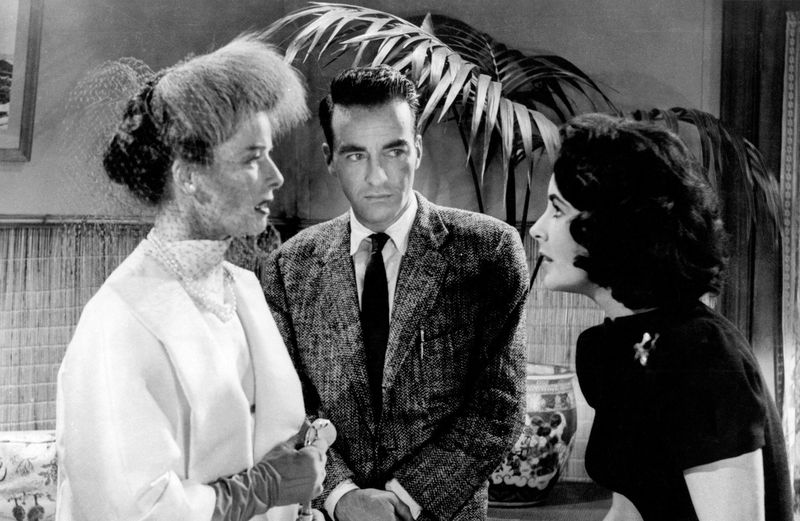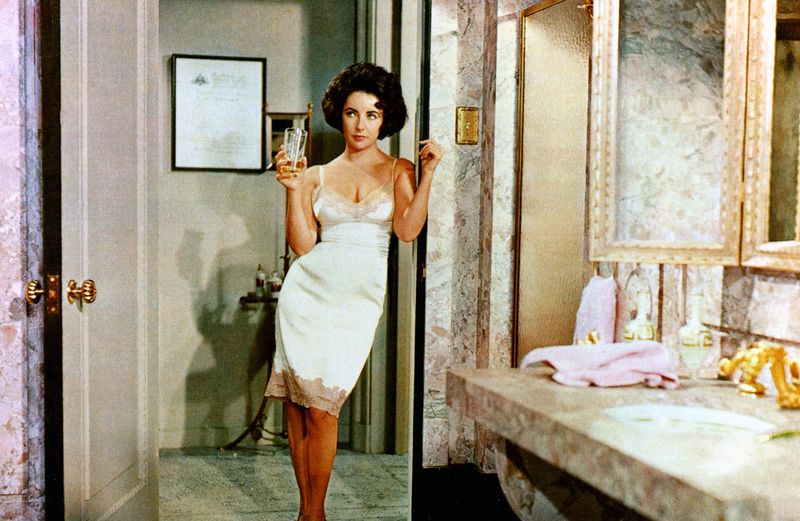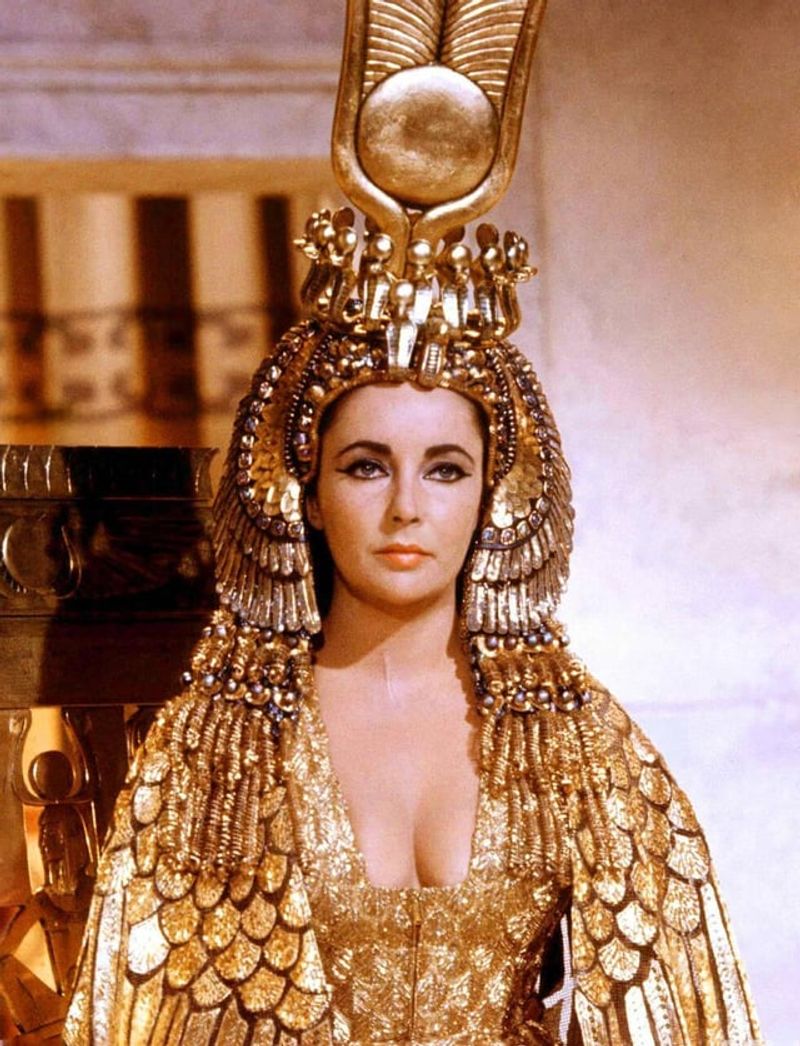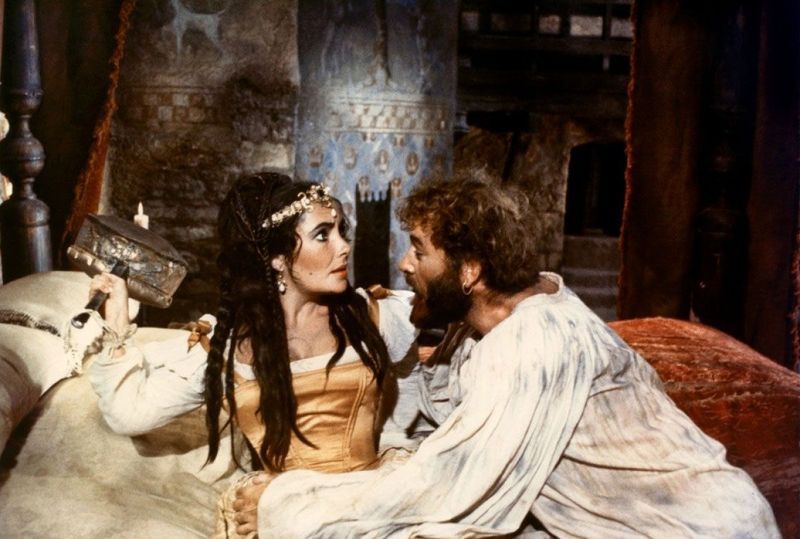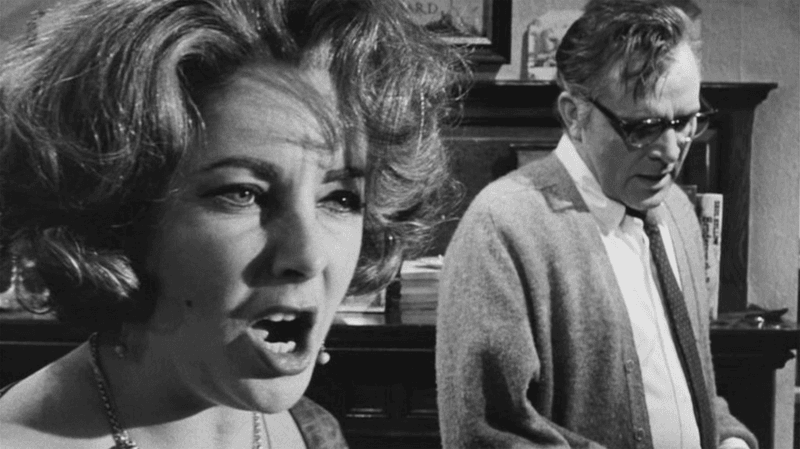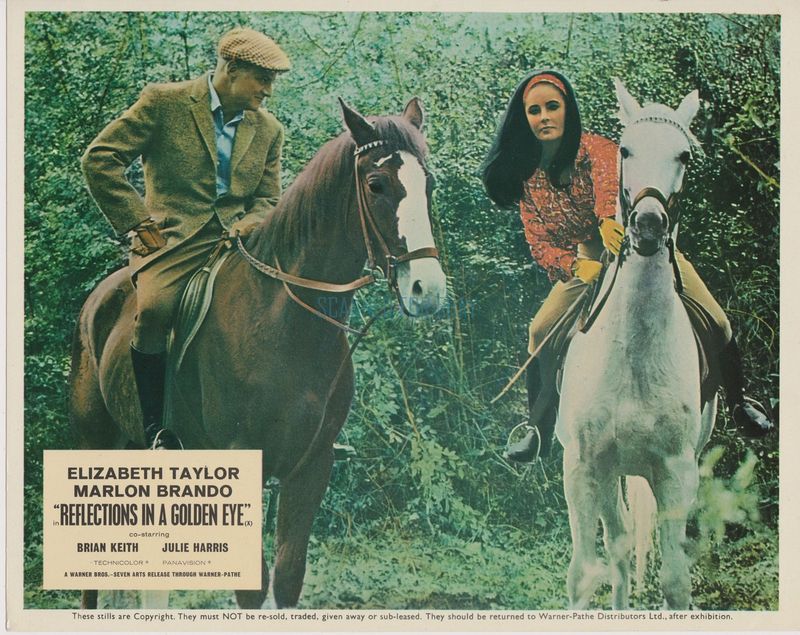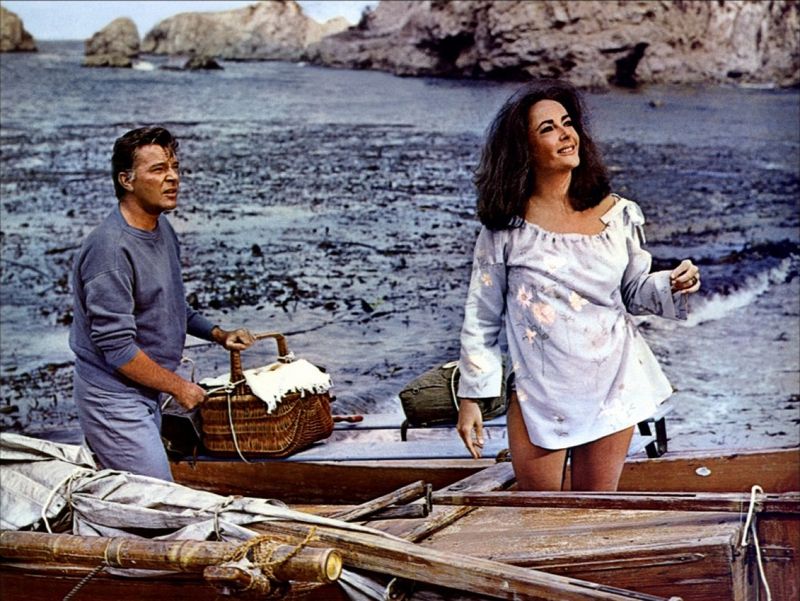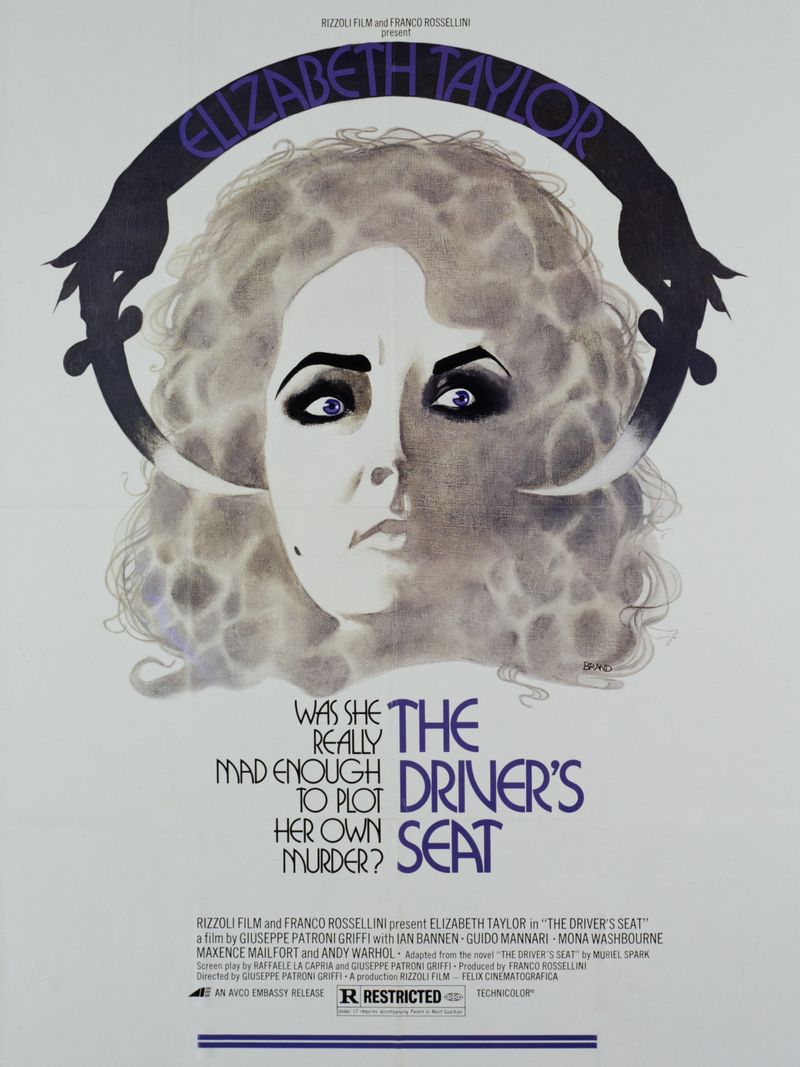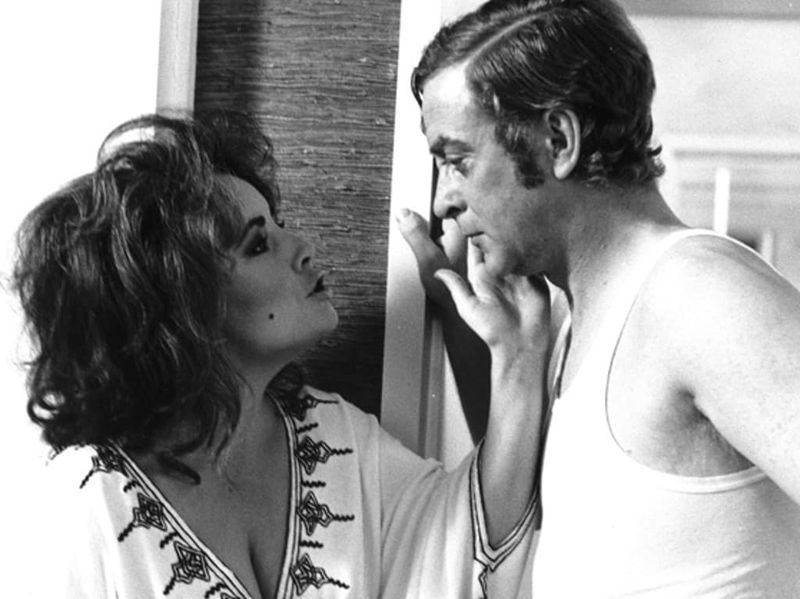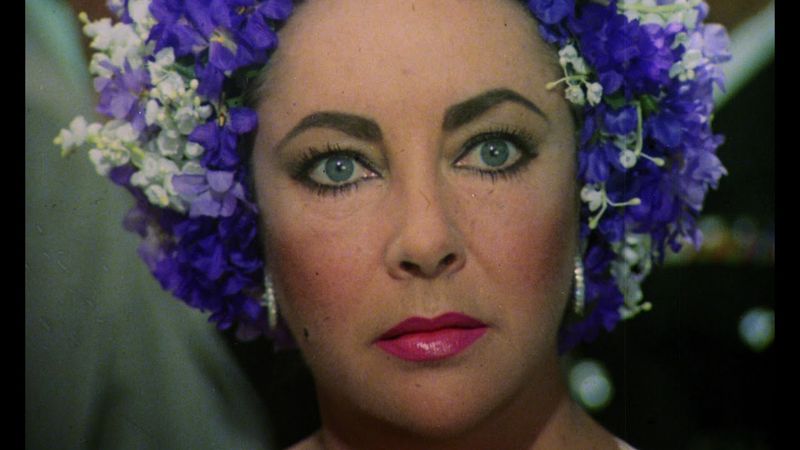Elizabeth Taylor captivated audiences for over five decades with her extraordinary beauty and immense talent. Starting as a child actress, she evolved into one of Hollywood’s most celebrated stars, winning two Academy Awards during her illustrious career. Her films not only showcased her remarkable range as an actress but also chronicled changing social attitudes and cinematic styles from the 1940s through the 1980s.
1. National Velvet (1944): The Breakthrough Role
At just twelve years old, Taylor galloped into stardom as Velvet Brown, a determined girl with dreams of racing her beloved horse in England’s prestigious Grand National. Her luminous performance radiates genuine passion and innocence that transcends the screen. The chemistry between Taylor and her equine co-star is remarkably authentic—perhaps because she was an accomplished rider in real life. MGM originally wanted another actress, but producer Pandro S. Berman insisted on Taylor after seeing her ride. This heartwarming tale of perseverance established Taylor as more than just a pretty face. Her portrayal of Velvet’s fierce determination and unwavering belief in her dreams resonated with audiences emerging from wartime hardship, making this film an enduring classic.
2. Father of the Bride (1950): America’s Sweetheart
Fresh-faced and radiant, Taylor embodied the perfect daughter in this charming comedy about wedding preparations. Her portrayal of Kay Banks captured the essence of youthful exuberance and the tender father-daughter relationship that anchors the story. Curiously, Taylor’s real-life engagement to hotel heir Conrad “Nicky” Hilton was announced during production, blurring the lines between art and reality. The publicity windfall wasn’t planned but certainly boosted the film’s box office appeal. Spencer Tracy’s performance as the beleaguered father perfectly complemented Taylor’s effervescent bride-to-be. Their scenes together showcase a natural warmth that elevates the material beyond simple comedy. The film’s success spawned a sequel and later remakes, but none captured the magic of Taylor’s luminous presence in this original version.
3. A Place in the Sun (1951): Hollywood’s Golden Couple
Magnetic chemistry crackles between Taylor and Montgomery Clift in this haunting adaptation of Theodore Dreiser’s novel. As wealthy socialite Angela Vickers, Taylor projects an ethereal beauty and sophistication that belies her youth. Director George Stevens famously captured Taylor in close-ups so stunning they became legendary in cinematic history. Her entrance at the pool party scene—where Clift first sees her—remains one of film’s most memorable character introductions. Behind the scenes, Taylor and Clift formed a deep friendship that would last until his death. Their intimate understanding translated to screen magic, creating one of cinema’s most compelling tragic romances. This film marked Taylor’s definitive transition from child star to serious dramatic actress, earning her critical acclaim and cementing her status as Hollywood royalty.
4. Giant (1956): Texas-Sized Epic
Sprawled across the Texan landscape, this multi-generational saga showcases Taylor as Leslie Benedict, a refined Easterner transplanted to cattle country. Her character’s evolution from fish-out-of-water bride to formidable matriarch spans decades, with Taylor aging convincingly throughout. Director George Stevens insisted on filming in the punishing Texas heat, where temperatures regularly exceeded 120 degrees. Taylor never complained despite the brutal conditions—even when her co-star James Dean often retreated to his air-conditioned car between takes. The film boldly addressed racial prejudice and changing gender roles, with Taylor’s character standing against discrimination toward Mexican-Americans. Her scenes confronting bigotry demonstrated remarkable courage for 1950s Hollywood. This epic performance further established her as an actress of substantial range and depth beyond her legendary beauty.
5. Cat on a Hot Tin Roof (1958): Southern Sizzle
Sultry and desperate, Taylor’s Maggie the Cat prowls through this Tennessee Williams adaptation with feline intensity. Clad in that famous white slip, she embodies frustrated desire and determination as she fights for her alcoholic husband’s attention. The production faced significant censorship challenges. Williams’ original play dealt openly with homosexuality and sexual frustration, themes the studio demanded be watered down. Despite these compromises, Taylor’s performance conveyed the raw emotional subtext through her expressive eyes and body language. Her chemistry with Paul Newman generated such heat that audiences barely noticed crucial plot elements had been sanitized. Taylor was actually grieving during filming—her husband Mike Todd had died in a plane crash shortly before production. This personal tragedy infused her performance with an authentic desperation that earned her an Academy Award nomination.
6. Suddenly, Last Summer (1959): Psychological Horror
Raw vulnerability permeates Taylor’s performance as Catherine Holly, a young woman institutionalized after witnessing a traumatic death. Her scenes opposite Katharine Hepburn’s formidable Violet Venable crackle with psychological tension and unspoken horrors. The film’s controversial subject matter—including cannibalism, homosexuality, and mental illness—pushed boundaries for 1959 audiences. Taylor’s harrowing breakdown scene, where she finally reveals the truth about her cousin’s death, required such emotional intensity that she collapsed after filming it. Director Joseph L. Mankiewicz created a claustrophobic visual style that heightened the Southern Gothic atmosphere. Taylor’s beauty serves as stark contrast to the ugliness of the story, making her character’s descent into trauma even more disturbing. Her fearless commitment to this difficult role earned her another Oscar nomination and further established her as a serious dramatic actress.
7. BUtterfield 8 (1960): The Reluctant Oscar Winner
Glamour and tragedy collide in Taylor’s Oscar-winning portrayal of Gloria Wandrous, a high-class call girl seeking genuine connection. The famous opening scene—Taylor in a slip writing lipstick message on a mirror—instantly became iconic, capturing both her character’s defiance and vulnerability. Taylor famously detested this film, calling it “a piece of trash.” She only completed it to fulfill her MGM contract before moving to 20th Century Fox for Cleopatra. The Academy likely awarded her partly out of sympathy after her near-fatal pneumonia during filming. Despite her personal disdain, Taylor delivered a nuanced performance that transcended the melodramatic material. Her Gloria balances toughness with wounded dignity, creating a complex portrait of a woman trapped by societal judgment yet yearning for redemption. The film’s examination of sexual double standards remains relevant, anchored by Taylor’s compelling emotional honesty.
8. Cleopatra (1963): The Most Expensive Love Story
Regal splendor envelops Taylor’s portrayal of Egypt’s legendary queen in this lavish historical epic. Her 65 costume changes (including the famous gold ceremonial entrance into Rome) set fashion trends worldwide and established new standards for cinematic opulence. Production troubles plagued this infamous film—Taylor nearly died from pneumonia, the budget ballooned to an unprecedented $44 million, and filming relocated from London to Rome. Her salary of $1 million (equivalent to about $9 million today) made her the highest-paid actress in history at that time. Beyond the spectacle and scandal of her off-screen affair with co-star Richard Burton, Taylor delivered a performance of surprising depth. Her Cleopatra embodies political cunning, maternal devotion, and passionate love with equal conviction. Despite mixed critical reception, the film cemented Taylor’s status as cinema’s ultimate female icon—a queen both on-screen and in Hollywood’s hierarchy.
9. The Taming of the Shrew (1967): Shakespearean Fireworks
Volcanic energy erupts between Taylor and then-husband Richard Burton in this lusty adaptation of Shakespeare’s battle-of-the-sexes comedy. As the fiery Katharina, Taylor hurls insults, furniture, and herself into the physically demanding role with uninhibited gusto. Director Franco Zeffirelli crafted a sumptuous Renaissance world filled with authentic period details. Taylor insisted on wearing historically accurate costumes despite their uncomfortable weight and restriction—her wedding dress alone weighed over 40 pounds. The couple’s real-life tempestuous relationship infused their performances with authentic passion. Taylor’s willingness to appear disheveled and unglamorous for much of the film revealed her commitment to character over vanity. Her transformation from shrewish rebel to loving wife remains controversial from a modern feminist perspective, yet Taylor’s performance conveys such intelligence and spirit that Katharina never seems truly “tamed”—merely choosing her battles more strategically.
10. Who’s Afraid of Virginia Woolf? (1966): Raw Marital Warfare
Transformed beyond recognition, Taylor abandoned all vanity to play Martha, a middle-aged, alcohol-fueled academic’s wife locked in marital combat. She gained 30 pounds, wore unflattering makeup, and adopted a harsh, braying laugh that shattered her glamorous image. Director Mike Nichols rehearsed the cast like a stage play before filming, resulting in performances of remarkable theatrical intensity. The film’s profanity-laced dialogue was revolutionary for 1966, helping to dismantle Hollywood’s restrictive Production Code. Taylor’s fearless portrayal earned her a second Oscar and remains her most critically acclaimed performance. Beneath Martha’s cruelty lies heartbreaking vulnerability—particularly in the devastating final scene where her illusions are stripped away. The parallels to Taylor’s volatile relationship with Burton added meta-textual resonance, though both insisted their actual marriage bore no resemblance to George and Martha’s psychological warfare.
11. Reflections in a Golden Eye (1967): Southern Gothic Strangeness
Blonde-dyed and boldly provocative, Taylor portrays Leonora Penderton, a sensual Army wife whose brazen infidelity torments her repressed homosexual husband (Marlon Brando). The film’s unusual gold-tinted cinematography created a dreamlike quality matching the story’s psychological complexity. Director John Huston originally shot the entire film in a distinctive gold-tinted process. When preview audiences rejected this experimental look, the studio reissued it in normal color—though Huston’s preferred golden version has since been restored. Taylor’s performance balances cruelty with a strange innocence—Leonora seems genuinely unaware of the psychological damage she inflicts. Her scenes riding horseback showcase her real equestrian skills while symbolizing her character’s untamed nature. This underappreciated film demonstrates Taylor’s willingness to explore morally ambiguous characters during her artistic peak, portraying female sexuality with unapologetic frankness rarely seen in 1960s American cinema.
12. The Sandpiper (1965): California Dreaming
Bohemian spirit infuses Taylor’s performance as Laura Reynolds, a free-thinking artist raising her son in isolated Big Sur splendor. Her barefoot, paint-splattered character represented 1960s counterculture values while her forbidden romance with Richard Burton’s married minister explored changing sexual mores. The film’s stunning California coastal scenery nearly upstages the stars. Taylor learned to paint for the role, creating several canvases herself rather than relying entirely on stand-in artists’ hands. Though critically dismissed as melodrama, the film features Taylor at her most naturally beautiful—often makeup-free with windswept hair. The Academy Award-winning song “The Shadow of Your Smile” became a standard, forever associated with the film’s bittersweet romance. Taylor’s portrayal of an unconventional single mother living by her own moral code rather than society’s represents a progressive feminist statement for mid-1960s Hollywood, highlighting her willingness to play controversial characters.
13. The Driver’s Seat (1974): Experimental Madness
Bizarre and unsettling, this experimental film features Taylor as Lise, a mentally unstable woman actively seeking her own murderer. Her performance veers between manic energy and eerie calm as she wanders through Rome in increasingly garish outfits that reflect her psychological disintegration. Based on Muriel Spark’s novella, the film employs disorienting narrative techniques including flash-forwards to police investigations of Lise’s eventual murder. Taylor took this challenging role during a period when quality parts for actresses over 40 were scarce, demonstrating her artistic courage. Director Giuseppe Patroni Griffi creates a surreal atmosphere matching the protagonist’s fractured psyche. Taylor’s willingness to appear deeply unlikable and mentally disturbed represents a brave departure from her glamorous image. Though commercially unsuccessful, this cult curiosity showcases her commitment to artistic risk-taking late in her career, prefiguring the psychological thrillers that would become popular decades later.
14. Zee and Co. (1972): Marriage on the Rocks
Venomous barbs fly as Taylor portrays Zee Blakeley, a foul-mouthed, manipulative wife determined to reclaim her husband from his younger mistress. Her performance bristles with acidic wit and barely concealed desperation, creating a character both repellent and strangely sympathetic. Released as “X, Y and Zee” in America, this British production allowed Taylor to unleash her considerable talents for verbal combat. Her real-life friendship with co-star Susannah York contrasted with their characters’ bitter rivalry, enabling a complex dynamic rarely seen in films about female competition. Michael Caine provides the perfect foil as Taylor’s exasperated husband. The film’s frank treatment of marital discord and sexual politics feels surprisingly modern, with Taylor’s Zee emerging as a complicated anti-heroine rather than a simple villain. Her willingness to appear emotionally raw and physically unglamorous in several scenes demonstrates her evolution from screen goddess to character actress during this phase of her career.
15. The Mirror Crack’d (1980): Hollywood Meta-Mystery
Self-referential wit sparkles throughout Taylor’s performance as Marina Rudd, a fading movie queen attempting a comeback while battling a mysterious poisoner. The role allowed her to playfully parody her own Hollywood legend status while showcasing her comedic timing. The film’s most delicious scene features Taylor facing off against rival actress Kim Novak—mirroring their real-life status as competing screen goddesses from different eras. Their characters’ barely disguised hostility crackles with authentic Hollywood rivalry energy. Director Guy Hamilton assembled an extraordinary cast including Rock Hudson, Tony Curtis, and Angela Lansbury as Miss Marple. Taylor’s willingness to acknowledge aging and career decline through her character demonstrated rare honesty for a former superstar. Her performance balances vulnerability with steely determination, particularly in scenes revealing Marina’s tragic backstory. This entertaining whodunit provided Taylor with her last truly substantial film role before health issues and humanitarian work became her primary focus.
